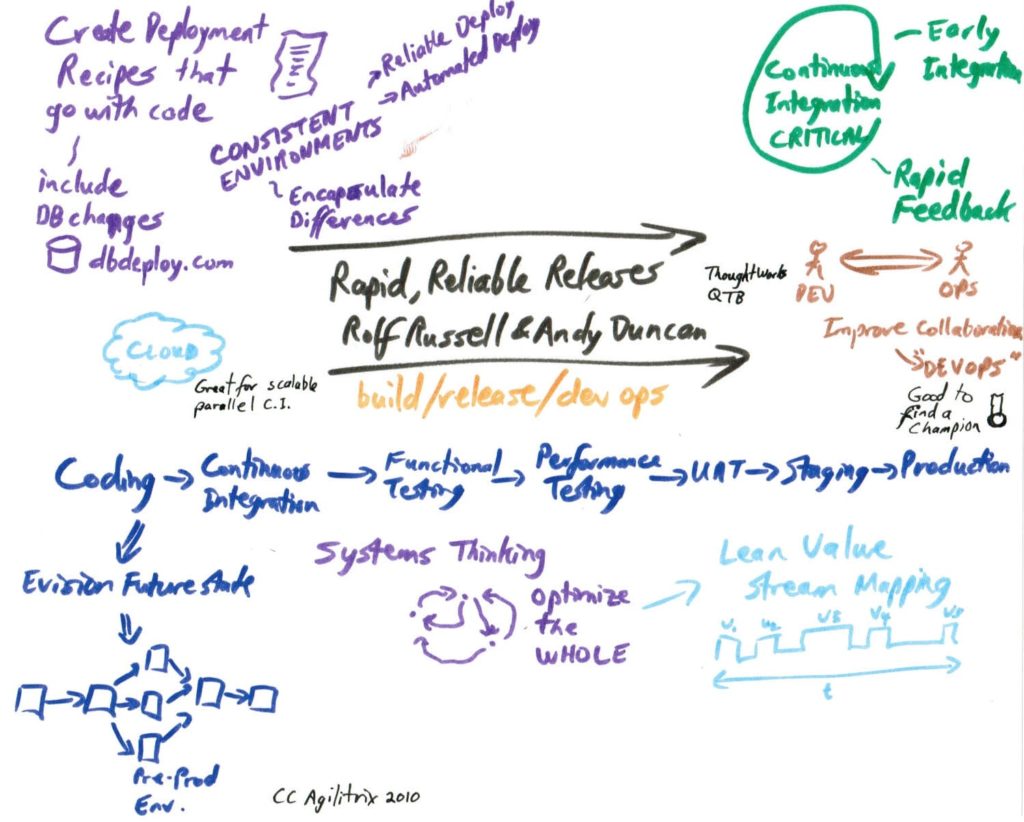I recently attended a ThoughtWorks QTB – Rapid, Reliable Releases (AKA It’s not making money until its in production) by Rolf Russell and Andy Duncan. It was a solid presentation around the importance of managing environments effectively.
I will walk through the diagram below starting with …
a reliable continuous integration system creates a foundation for rapid reliable releases. It provides early integration and gives the teams rapid feedback on how they are doing. Everything else follows from this.

A key ingredient for successful management of production and other environments is collaboration with dev and ops. There is even a new type of role appearing – DevOps – that handles both development and operations. Either way, someone needs to champion this important interface.
The next topic was about using value stream mapping to see what it takes to actually get something into production (I heartily agree with this approach as I have found it very effective). What we often see as a result is that the work is optimized for each department and is not aligned with the best needs of the whole business and there are lots of delays and handoffs.
The next step is to envision future state – what items can go in parallel to get feedback as soon as possible. In one environment is was functional testing, performance testing, and UAT.
A practical idea is to use the cloud for scalable parallel Continuous Integration. In this situation we need lots of computers for a short burst, so this lines up nicely with the cloud’s pay per use model and lets testing go really fast.
The final bits of advice were around creating deployment recipes that go with the code (including database changes). In order to accomplish this you will need to create consistent environments and encapsulate differences (such as number of servers, specialized hardware, etc). Once you explicitly handle all the risky bits, then it is easy to support reliable and automated deploys.
If you haven’t done this sort of thing before, then it may seem like a lot of work. For me, it’s seems just normal. I personally implemented a lot of this when I worked at a startup in 2000 and have been using it ever since. I can say firsthand that work on this really pays off.


